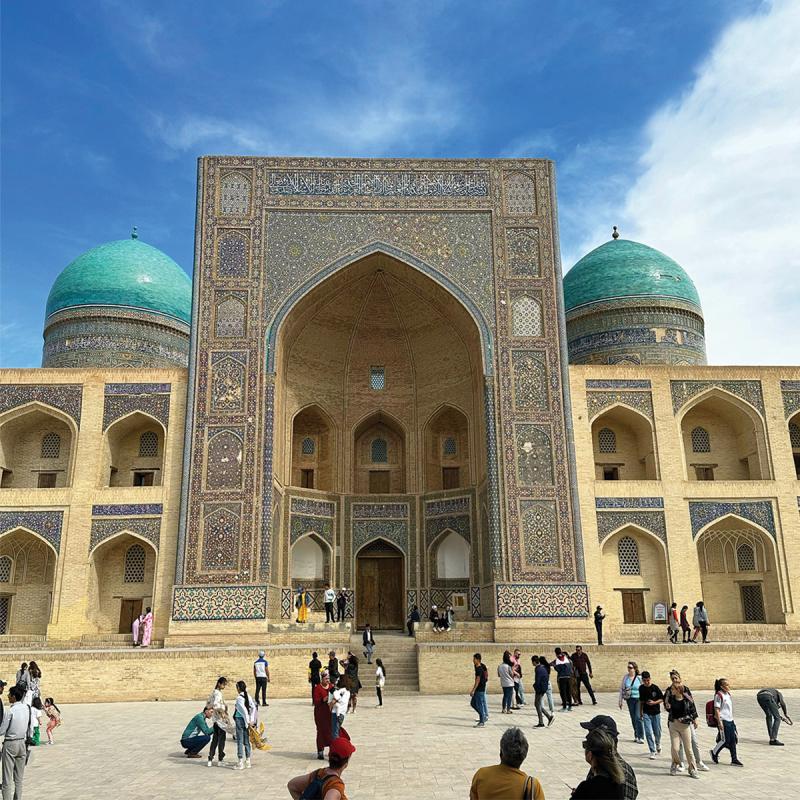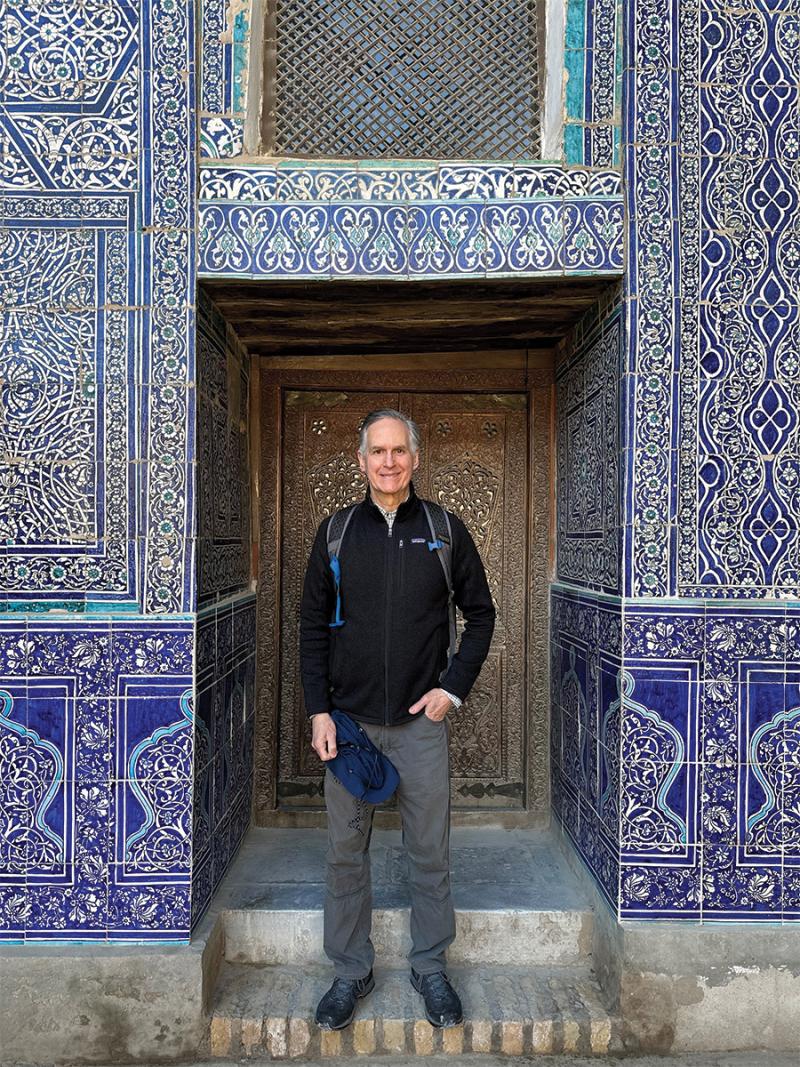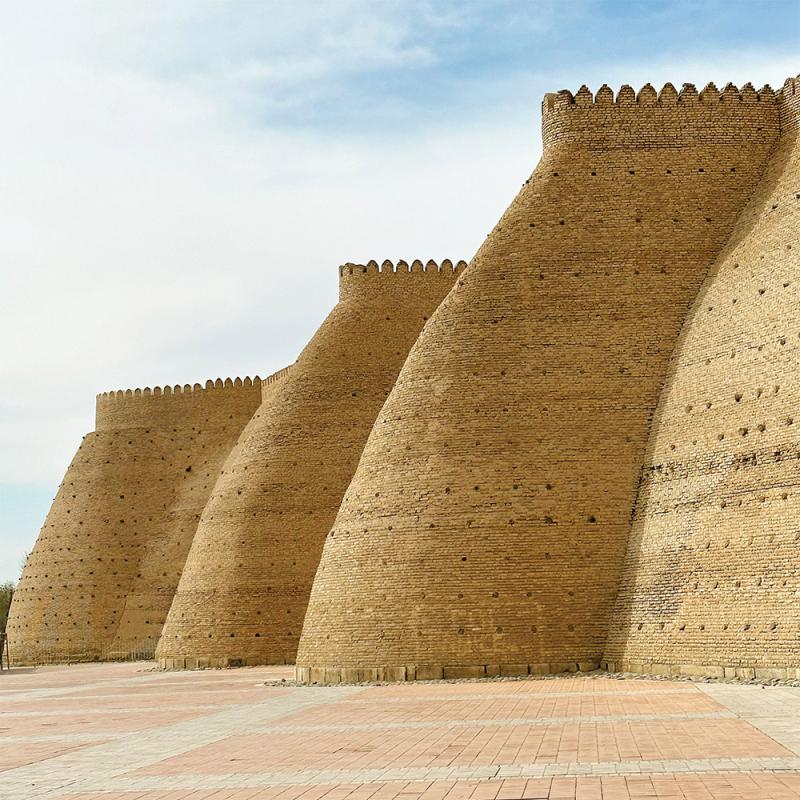Ignacio Maza, executive vice president of Signature Travel Network, is just back from Central Asia with this report.
Central Asia is one of the world’s last frontiers. The best introduction to this corner of the globe is Uzbekistan, home of the most UNESCO World Heritage Sites in the region and the heart of the ancient Silk Road. I recently visited Uzbekistan. A few highlights:
First: Tashkent, capital of Uzbekistan and the country’s major air gateway. This pleasant city of 2.5 million, originally a staging post for traders, was later rebuilt into a modern metropolis after a devastating earthquake in 1966. The city has broad tree-lined boulevards, Soviet city planning, and grandiose architecture built by Uzbekistan’s rulers since independe0nce in 1991. Visit the Hazrat Imam complex, Tashkent’s historic heart, especially the Muyi Muborak Library with the oldest copy of the Koran. Next door is the Barak-Khan Madrasa, over 500 years old. The charming Museum of Applied Arts, former residence of Russian diplomats, has a great collection of Uzbek handicrafts, especially carpets and suzanis (traditional embroidered fabrics). Wander through Chorsu bazaar, commercial center of Tashkent, a bustling emporium selling everything from produce to household goods. Don’t miss Tashkent’s Metro, every station showcasing a theme. My favorite: Kosmonavtlar, celebrating Soviet astronauts. Stay: Hyatt Regency Tashkent. This modern, centrally located hotel has great service, spacious guestrooms, rooftop swimming pool, and four restaurants and bars.

From Tashkent, I flew to Urgench, closest airport to ancient Khiva. This oasis in the western desert rose to prominence during the Middle Ages and became a fabled stop on the Silk Road. Ransacked and rebuilt multiple times, the Khiva you want to see is Ichon Qala, the historic walled city with its maze of walkways, madrasas and mosques. Old Khiva is frozen in time. You expect Genghis Khan to appear as you walk down weathered streets. There are over 50 madrasas (Islamic religious schools) in Khiva, each with its own character. Most notable: Hojashberdibiya Madrasa, oldest of all; Shergazi Khan, dating back to the 18th century, and Muhammad Rahim-Khan, with the finest blue and white majolica tiles set against terracotta. You’ll notice the minarets, especially Juma, with its distinctive turquoise stripes; Islam Khoja, the tallest; and—my favorite—the colorful Kalta (short) Minar, covered with aquamarine and green tiles. Tips: Walk on top of the massive crenelated walls surrounding Khiva for a new perspective on Ichon Qala. Stay: Zarafshon Hotel, a simple, well-run bed and breakfast within the walled city.

Next stop was Bukhara, one of Uzbekistan’s top attractions, with a rich history going back over 2,500 years. In the ninth century, Bukhara was a premier cultural and religious center of Central Asia. As a major destination on the Silk Road, Bukhara became wealthy and powerful, attracting invading armies from Alexander the Great to Stalin, who attacked in the 1920s. Start your visit at the Ark, the massive, medieval mud-brick fortress and home to the last Emir of Bukhara. Continue to Lyabi Hauz square, the heart of old Bukhara, built around an artificial reservoir and a great spot for lunch or dinner. Nearby are the 15th-century trading domes, remnants of camel-driven caravanserais selling jewelry, miniature paintings, ceramics, handicrafts and celebrated Bukhara carpets. The city’s top highlight is the Poi Kalyon complex, a grand square flanked by the enormous Great Mosque and the photogenic Mir-i-Madrasa, with aquamarine domes and intricate tile patterns. Standing tall over the site is the beloved Kalyon minaret, built in 1127 and the city’s Eiffel Tower. A short drive out of town is the serene Naqshbandi Complex, one of Central Asia’s holiest sites. Stay: Mercure Bukhara, a modern four-star hotel near the old city, with an indoor swimming pool, rooftop restaurant and comfortable guestrooms.

Journey’s end: Samarkand is, without a doubt, the star attraction of Uzbekistan. This mythical city of spectacular Islamic architecture dazzled Marco Polo and countless travelers. Because of Samarkand’s importance as capital of vast empires, it has monuments and sites of breathtaking beauty. The Registan, Samarkand’s central square, is the most impressive landmark in Uzbekistan. An artistic masterpiece, the site has three splendid and enormous madrasas facing each other, covered in exquisite tilework. Seeing the Registan was a dream come true for me. Within walking distance is Bibi Khanym, once Islam’s largest mosque, now a magnificent heritage site. Notice the massive ribbed blue dome, commemorating medieval emperor Timur’s wool hat. The Siyob Bazaar nearby offers a taste of everyday life in Samarkand. Away from the city center is Shah-i-Zinda, the remarkable hilltop Islamic necropolis, dating back to the 14th century. The site has over 20 stunning blue and turquoise-tiled tombs of royals and notables along a narrow street, dating back to the 14th century. Shah-i-Zinda is a journey back in time and an unforgettable experience. Tip: Return to the Registan and notable monuments after dark, to admire awe-inspiring landmarks beautifully illuminated. Stay: Samarkand Regency Hotel is the city’s finest and a member of The Leading Hotels of the World. This new luxury property offers top-notch guestrooms, two great restaurants, rooftop bar, 75’ swimming pool, and heartfelt service. Contact the talented GM, Roland Obermeier, at [email protected].

Long before the internet, there was The Silk Road. This fabled route connected Europe and China for thousands of years, made East-West trade possible, and facilitated the exchange of knowledge, science and religious beliefs. For travelers interested in history, architecture, culture and new horizons, Uzbekistan awaits.
Practical advice:
When to visit: The best time to travel here is March to May, and September to November. Uzbekistan has bitterly cold winters and very hot summers.
Getting there: Turkish Airlines has the most frequent service to Uzbekistan, via Istanbul.
Money matters: At press time, one USD = 11,300 UZS (Uzbek Som). Get cash at ATMs within the better hotels or banks in major cities—especially Kapital Bank.
Access: I traveled with Exeter International, which helped me plan my trip and did an exceptional job. Exeter has the guides, resources, and expertise you need in Central Asia.
Related Articles
Bhutan Introduces Incentive for Longer Stays
Turkish Airlines Adds Bukhara, Uzbekistan to Its Network